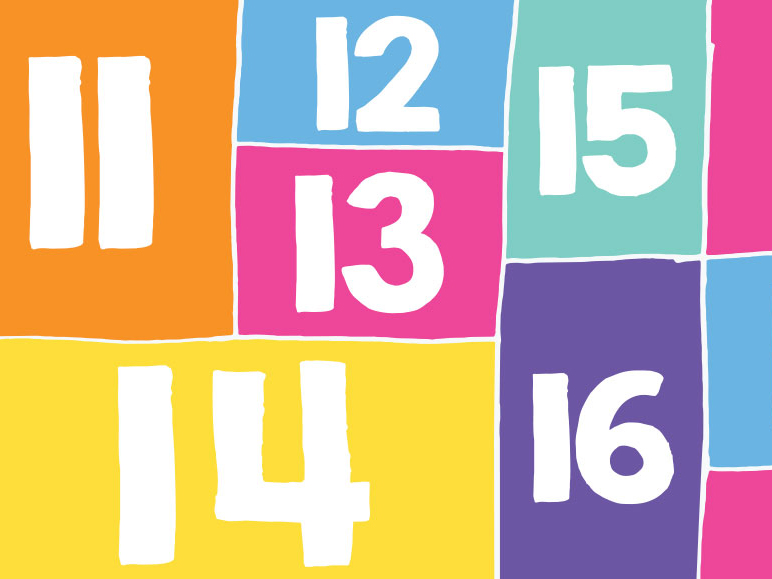Teen numbers can be very tricky for early math learners to understand. It's common for preschoolers to be able to count to ten smoothly, and then skip or confuse the numbers that follow.
The main reason numbers 11 through 19 are so tricky to master is because they do not follow the common rule for reading numbers — the language connection to teen numbers is different than most other numbers. For example, 35 is made up of 3 tens and 5 ones and is pronounced as "thirty-five." This pronunciation is logical since your child sees first the number three, followed by the number five. But consider the number 17: It's made up of 1 ten and 7 ones, but pronounced “seventeen." Your child sees the number 1 followed by the number 7 — so it's understandably confusing that it's the "seven" that's said first.
Your child will begin to develop a deeper sense of these numbers in kindergarten and first grade, but you can encourage your child's ability to identify, read, and write teen numbers at home with these five activities:
1. Rote Counting: Practice counting out loud from 10 – 20 with your child. Take turns saying each number and correct her if she makes any mistakes. Help her say each number correctly. The more she practices, the better she will become at saying the numbers!
2. Teen Number Cards: Write index cards with the teen numbers. Put one number on each index card. You can use these cards in so many different ways:
- Mix the cards up and have your child put them in order from least to greatest.
- Use them as flashcards to identify each teen number.
- Play the game Teen War – just like regular Math War, but with teen numbers only
3. Three-Four-Handed Teens: Play this game to show your child that teen numbers are made up of 1 ten and some ones. Hold up all 10 of your fingers. Then, have your child hold up some fingers as well. Together, all these fingers represent a teen number. For instance, if your child is holding up three fingers, and you're holding up all your fingers, then the number is 13.
4. Sand Tray Teens: Use a paper plate or a tray and some sand to have your child write different teen numbers as you say them aloud. You can also do this with shaving cream or whip cream! (If you're somewhere warm, try these 10 ways to practice math at the beach.)
5. Bundle Teens. Have your child use a rubber band to bundle together 10 straws. That represents 1 ten. He can use Cheerios to represent the ones. So one bundle of 10 and seven Cheerios represents 17. For an extra challenge, your child can write the equation to match the teen number: 10 + 7 = 17.
Finding different ways for your child to identify teen numbers will help her recognize and understand these numbers at a deeper level. Continue to count with your child out loud and find teen numbers in the world around you. Enjoy watching your child deepen and strengthen her number sense. And remember: teen numbers are between 10 and 20!

